At a glance:
- Diagnosis: Breast Cancer ER- PR- HER2+ IDC, DCIS, Stage 1, Grade 2,
- Drug regimen: 6 rounds of Taxotere, Carboplatin, Kanjinti, & Perjeta, followed by 11 rounds of Kanjinti & Perjeta
- Results: Saved 95% of hair
- Liesl says: “It is my personal mission to ensure that every mother diagnosed with breast cancer knows this therapy exists”
Liesl wanted to control her hair loss to minimize the traumatic impact on her 7-year-old daughter and reassure her that “mommy was going to be okay.”
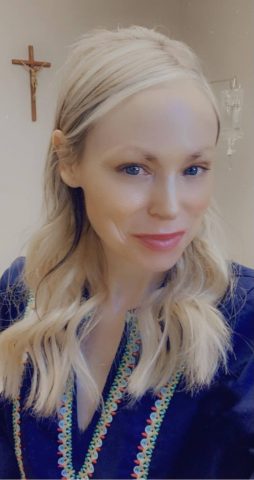
Liesl’s results after chemo
Liesl’s diagnosis and treatment
In February 2022, Liesl was given the news that no one ever wants to hear: “Your pathology report has come back positive for HER2+ Invasive Ductal Carcinoma (Breast Cancer), and we need to get you over for a CT scan immediately.”
Liesl says, “I felt like I’d been punched in the stomach, and all I could think about was my precious little girl.”
After her CT scan and other imaging came back clear, with no evidence of lymphatic intrusion or metastasis, Liesl’s initial discussions with her surgeon were very optimistic.
“My surgeon explained that this type of breast cancer responds very well to ‘targeted’ therapies (monoclonal antibodies), which typically don’t cause hair loss. Hallelujah! I was relieved by this news and decided to have a bilateral mastectomy, with sentinel node biopsy and immediate reconstruction.”
Liesl’s surgery was scheduled for March 11, 2022, the week after her daughter’s seventh birthday, and right at the start of her spring break.
“I was discharged home from the hospital with four Jackson Pratt drains, and my seven-year-old little girl helped nurse me back to health alongside my caregivers. The results of my sentinel node biopsy came back negative. I was ’cancer free’ and so presumed the worst was behind me.”
Reality hits home
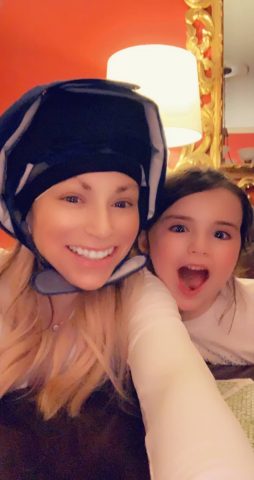
Liesl and her daughter
After surgery, Liesl had been very careful to shield her daughter from its effects on her physical appearance. But after a few weeks, and following much discussion and prayer together, she felt her daughter was ready and prepared to see the scars.
But the moment Liesl revealed the scars, her daughter could see for the first time that “mom was really sick.” Reality hit home. Despite Liesl’s best efforts, her daughter was distraught.
“She didn’t understand why mommy had to be sick,” explains Liesl. “She was saying, ‘It’s not fair. Why would God do this? I can’t lose you’.”
It was at this point that Liesl knew she needed to do everything within her power to protect her daughter from the physical effects of her treatment. “My marred body told her that something was very wrong because if mommy were healthy, she wouldn’t look like this.”
Two weeks later, Liesl met with her oncologist for the first time. It was then that she received the devastating news that her treatment plan now included “standard chemotherapy” alongside the targeted drug therapies.
“I wasn’t prepared for ‘real chemo’ – losing my hair was my greatest fear,” says Liesl. “No amount of psychological priming would equip me or my daughter. Unlike mastectomy scars, I wouldn’t be able to cover up and shield either of us from my hair loss.
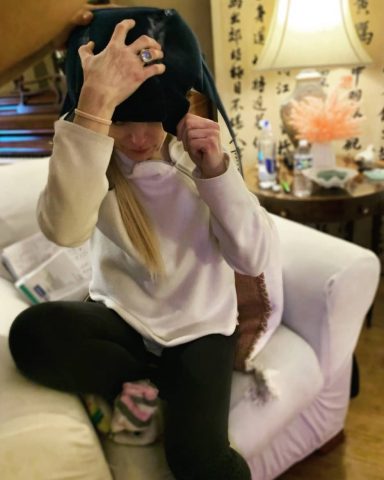
Liesl practices using Penguin Cold Cap before her chemo session
How did you hear about cold capping?
Liesl’s doctor confirmed her worst fears. The chemo regimen she’d been prescribed would definitely result in hair loss, plus there was a 3% chance her hair would never grow back after treatment – permanent alopecia.
Her doctor explained about a scalp-cooling technology called cold cap therapy that helps people save their hair during chemotherapy.
“He explained the simple science and process behind cold cap therapy and said it could preserve up to 70% of my hair. And any hair that I did lose during chemotherapy would grow back healthier and faster.
“My family and I were dumbfounded. I’ve worked in healthcare for 25 years, 20 of those years as a nurse. I could not believe I’d never heard of cold cap therapy before. Scalp cooling is not new, and in fact, Penguin Cold Caps has been in existence for over two decades.”
Liesl’s oncologist initially recommended a machine-based scalp cooling system available at a local hospital. However, the clinic with the machine was not one within her insurance network. Her oncologist then suggested she research manual cold cap therapy, which uses dry ice instead of a machine to cool the caps.
After her initial cold cap therapy provider let her down, Liesl’s nurse gave her Penguin Cold Caps details.
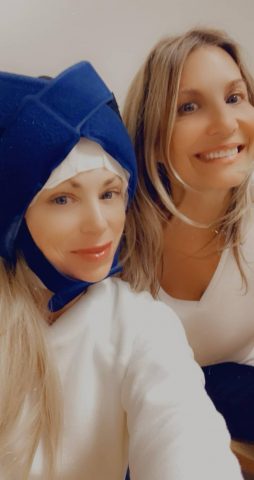
Penguin Cold Capper, Jill, supported Liesl through her chemo sessions
“It was just 3-days before my first chemo session when I contacted Penguin, and they arranged an overnight delivery,” Liesl explains. “When the kit arrived, I was overwhelmed. The process seemed daunting, and I had no capacity left to absorb all the information. I called my aunt in a panic, and she told me not to worry and started making phone calls.”
Within just a matter of hours, Liesl’s aunt had contacted her local Penguin Cold Cap rep and secured the services of a “professional capper” to manage the cold capping during her chemotherapy treatments.
“My personal capper drove four hours that very night and stayed in a nearby hotel, ready to cap me the following day. My capper, Jill, was also a breast cancer survivor and had saved 90% of her own hair using cold cap therapy.
“When I first met Jill my anxiety immediately diminished. She arrived with a big smile, positive energy, and gorgeous locks – I knew I was going to get through this and together we would save my hair. But most importantly, I knew my precious little girl would not endure more trauma from this dehumanizing disease: Mommy would still look like mommy.”
Liesl’s experience of cold capping
“Cold capping was the silver lining of my chemotherapy weeks – and keeping my hair was an incredible bonus.”
Liesl explains that with Jill by her side, she didn’t think about the chemo drugs entering her body and her mind never wandered to dark places.
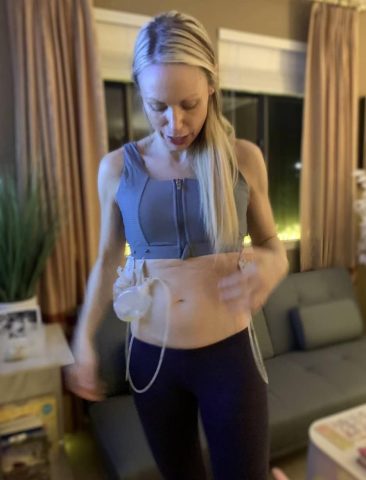 “I was far too busy chatting and laughing with Jill, my new friend, who professionally changed the caps every 20 to 25 minutes. Then, once the infusions at the clinic were complete, she’d pack up and continue cold capping at my home for another four and a half hours.
“I was far too busy chatting and laughing with Jill, my new friend, who professionally changed the caps every 20 to 25 minutes. Then, once the infusions at the clinic were complete, she’d pack up and continue cold capping at my home for another four and a half hours.
“I cannot imagine going through that experience alone and without the pleasant distraction of capping. Yes, the caps are cold, but they’re not intolerable and any discomfort I may have had was minimal and absolutely worth it to save my hair.
“Chemo days became one of my daughter’s favorite days – she looked forward to Jill coming into town. She would return home from school as we finished our cold capping session and loved seeing the ‘silly’ blue cap on mommy’s head. She’d even wrap her hair in a Towel Turban just to look like me.”
Liesl’s results:
Liesl’s capping was a success, “I’ve retained approximately 95% of my hair and only have two small patchy areas near my hairline and crown that are easily covered up and unnoticeable to others.”
The real litmus test was Liesl’s daughter.
“She was so unaffected by my chemotherapy because I didn’t look any different, and kept up with all our normal activities.”
Liesl continued taking her daughter to and from school, summer camp, swim practice, play dates, birthday parties, the grocery store, the park, school events, eating out, doctor’s visits, and even the hair salon.
“Neither cancer nor the chemotherapy was able to rob me of those priceless moments with my daughter. Nor did they rob me of my privacy, my emotional and psychological strength, my faith, or my healing capacity.
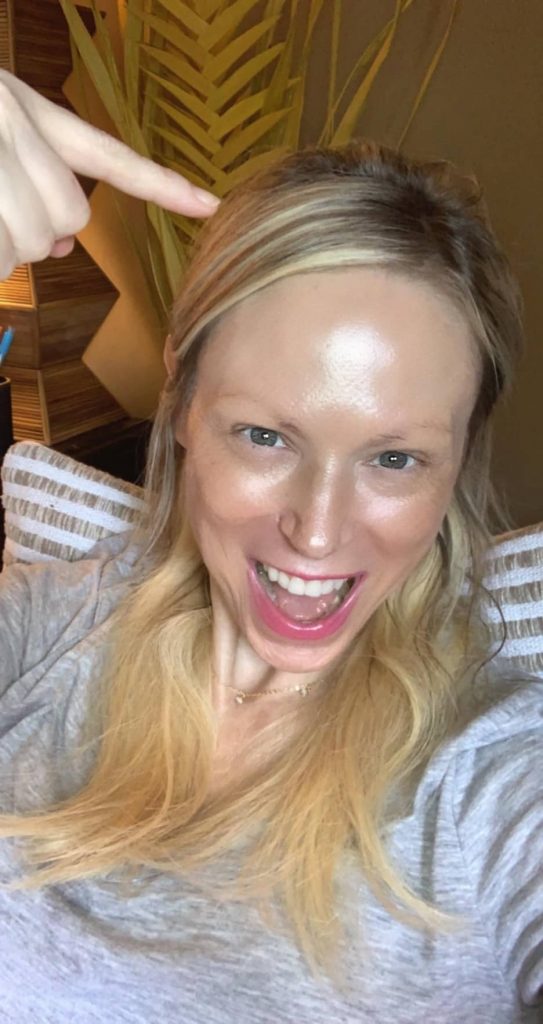
Liesl is happy she still looks the same after chemo, for her daughter’s sake
“Since my first cold capping session, I’ve told everyone who will listen about the benefits of this therapy, including strangers and internet support groups. It is now my personal mission to make sure that every mother diagnosed with breast cancer knows that this therapy exists and that saving her hair is her rightful choice to make. It is one I am eternally grateful I made, and so is my daughter.
Can you offer any tips or advice to others when using the caps?
Liesl’s biggest piece of advice to others is “Don’t do it alone!”
She strongly recommends hiring a professional capping service that can assist and train you and your loved ones and provide you with professional support and guidance.
She says: “You won’t regret it. This journey is going to be taxing, regardless, and it can feel so overwhelming at times. For capping to be successful, it must be done and managed meticulously each time, and you’ve got to follow stringent hair care guidelines before, during, and after.
“Investing in experienced people who’ve been through this process before, understand what you’re going through, and whose job it is to save your hair is well worth it. It allows you to relax a little, and leaves you to focus on healing and staying positive.”
